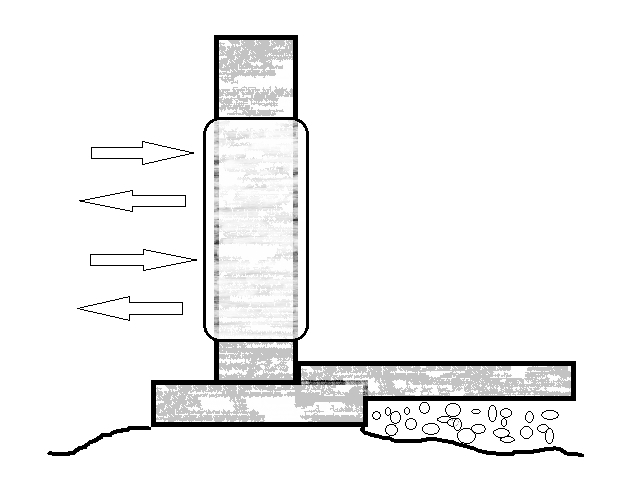High Pressure Injection or Low Pressure Injection
High Pressure Epoxy Grout Injection for Concrete Crack Repair
When done correctly, high pressure injection in almost all cases produces a more durable and reliable seal than low pressure injection.
Cities and utility companies use high pressure injection almost exclusively in sewers, bridges and public buildings. High pressure crack fills use 4 or more times the volume of grout.
A high pressure pump forces the liquid grout into the entire crack no matter how small the crack is. As the grout cures it produces a much finer pore structure. Also there is usually a significant amount of grout that is forced outside between the wall and the ground to fill voids and make an additional water barrier.
When a high pressure pump is used, a higher quality and more flexible grout can be used. A flexible grout can take some movement without cracking and failing. High pressure must be used for structural repairs with epoxy grout.

This diagram illustrates the final result of a high-pressure urethane grout injection into a cracked/fractured foundation.
Low Pressure Epoxy Injection for Concrete Crack Repair
The main advantage of low pressure injection is price and ease of use. The materials are less expensive and the job is quicker, cleaner, cheaper, and requires less involvement. Home owners can purchase a "do-it-yourself or DIY kit" over the internet.
The main disadvantage of a low pressure injection is that unless the concrete crack is wide, the grout only fills a short way into the crack. Water is still prevented from entering the basement, but water and ice can still get into the concrete from the outside. Over time water and ice can damage the concrete inside the crack and work around the grout.
This method is especially unreliable with hairline cracks and where water pressure and water flow is present. Low pressure injection also works better with rigid grout that exerts more of its own force as it cures and expands into the crack. As the grout expands into the crack it produces a much larger pour structure which is prone to failure. Rigid grouts are also brittle when cured and are more prone to failure if the crack shifts. Even a large truck driving by can crack low pressure rigid grout.

This diagram illustrates the final result of a low-pressure urethane grout injection into a cracked/fractured foundation performed from the inside of the affected structure (No excavation required).